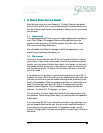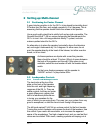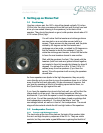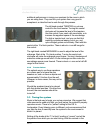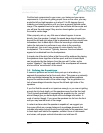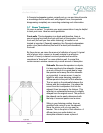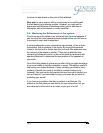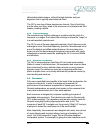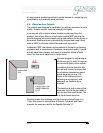
ver 1.0
12
1212
12
~ÄëçäìíÉ=ÑáÇÉäáí
ó
A Genesis loudspeaker system correctly set up, can and should provide
a soundstage that is wall-to-wall, with pinpoint focus; the speakers
disappearing completely on a recording containing such information.
3.7 Room Treatment
No room is perfect. To optimize your sonic presentation it may be helpful
to treat your room. Here are some guidelines:
Front walls. This loudspeaker is a dipole and therefore, there is
sound coming from both the front and back of the speaker. How the
front wall (the wall you face while listening), is treated or not
treated is important. Generally speaking, the Genesis loudspeakers
prefer a live (hard reflective) front wall to a dead (soft absorbent)
front wall.
By these terms, we mean the amount of reflection of sound. A typical
wall of glass, brick, cement or drywall material is a reflective
surface. A heavily curtained or sound-proofed wall would be
considered a "dead wall" or a non-reflective wall. A normal thin
curtain across a window causes only a small amount of absorption.
Sidewalls. Because the speaker is a dipole,
it is less sensitive to the sidewalls. However,
as a rule of thumb it is a good idea to keep
the speaker as far away from the sidewalls
as is practical. In some rooms, it may be
helpful to add some damping material or
diffuser panels to the point of first reflection.
This is a point on the sidewalls between the
listener and the loudspeaker. It is where the
sound from the loudspeaker first hits the
sidewall, then bounces to the listener. This
reflection is undesirable because it is slightly
delayed from the original sound. This point on
the sidewall can be easily determined with
the help of a second person and a mirror.
Sitting in your listening position, have an
assistant hold a mirror up on the sidewall.
Move the mirror until you can see the
tweeter. This is the point of first reflection. A
diffuser (see your audio dealer), an
absorptive material or even a piece of





